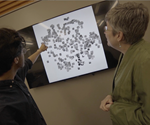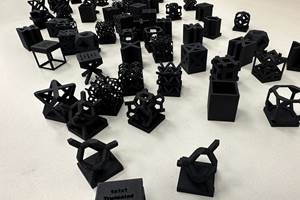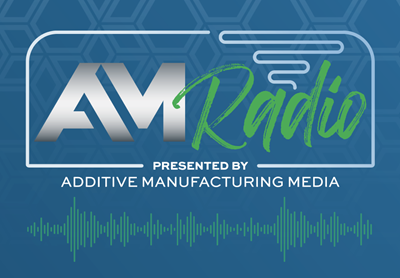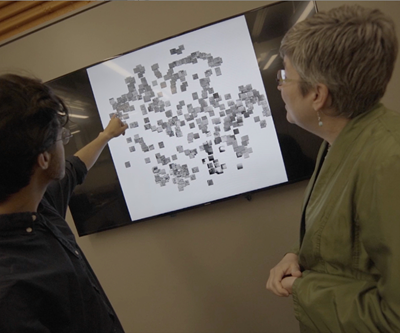East of downtown Pittsburgh along the Monongahela River in Pennsylvania, one of Steel Town’s historic mills is now playing a part in a brand-new age in manufacturing. Mill 19, which opened in summer of 2019, is a three-building complex that literally sits inside the shell of a historic steel mill. Its original walls and roof are gone but the bones remain, now crowned with a new array of solar panels that provide power to the facilities beneath: labs, classrooms, offices and manufacturing spaces dedicated to cutting-edge technology.
Mill 19 occupies the former Jones and Laughlin Steel Hazelwood Works and later LTV Coke Works site east of downtown Pittsburgh. Today, the steel mill’s frame supports one of the largest single-slope arrays of solar panels in the U.S., and houses state-of-the-art facilities for organizations including the Advanced Robotics for Manufacturing (ARM) Institute, Catalyst Connection workforce training center and the Manufacturing Futures Institute (MFI).
This facility, once part of Pittsburgh’s steel boom, is playing a role in the digital transformation happening in manufacturing today. Within it, research is underway into transformative technologies including intelligent robotics, digital twins and generative manufacturing. Additive manufacturing is being applied here to advance solar power, as well as nuclear power.
And AM is a research topic here, too, particularly in connection with one of the most important emerging technologies in manufacturing: artificial intelligence. Researchers with Carnegie Mellon University are studying how AI can be applied to help design AM alloys, optimize AM parameters, lower AM’s skills barrier and even address a fundamental AM problem — spatter.
Additive and the Manufacturing Futures Institute
While multiple tenants reside inside the complex, Mill 19 is perhaps most notable as the home of the Manufacturing Futures Institute (MFI), a multidisciplinary effort from Carnegie Mellon University.
“We’re focused on the digital transformation of manufacturing,” says Dr. Sandra DeVincent Wolf, executive director of the Institute. That transformation encompasses many technologies and areas of research, including additive manufacturing as well as robotics, generative design, digital twins, biomanufacturing and much more.
Dr. Sandra DeVincent Wolf is the executive director of the Manufacturing Futures Institute (MFI). In addition to additive manufacturing, the MFI supports investigation into areas such as generative manufacturing, biomanufacturing and intelligent robotics. (The Yaskawa arms seen here arepart of a project to train robots in assembly and disassembly, using LEGO bricks. Note that these are not cobots — light curtains are used rather than physical guarding here.) Source: Carnegie Mellon University
“This is an interdisciplinary and collaborative community,” Wolf notes, pointing out that the Manufacturing Futures Institute touches six out of Carnegie Mellon’s seven colleges. Its physical footprint at Mill 19 is also a place for industry collaboration and outreach to the next generation, including both CMU students and younger members of the local community.
The MFI is the anchor tenant of the Mill 19 complex and manages the first and second floor of Building A at the southern end of the site. The building holds a number of resources including labs and testbeds focused on robotics, digital twins and additive manufacturing. The additive lab at Mill 19 is equipped with several modalities, including laser powder bed fusion (LPBF) and powder-fed directed energy deposition (DED), with machines from Trumpf, and a lab-scale wire additive manufacturing (WAAM) system as well as a ClassMate Laser welding and cutting machine from Lincoln Electric.
(Complimentary capabilities located at an on-campus additive lab include binder jetting with an Innovent+ 3D printer from ExOne, now part of Desktop Metal; electron beam melting [EBM] with an open-source system from Freemelt; and LPBF via an EOS M290 and new AconityMIDI dual-laser system. Additionally, both additive facilities have aerosol jet printing capability for nanoscale printing.)
Most of the additive equipment has added sensors (high-speed and infrared cameras, acoustic sensors, pyrometers) to facilitate various research projects, including the capture of data for machine learning — more on that in a moment.

Wolf shows me around the additive manufacturing space at the Manufacturing Futures Institute inside Mill 19. Multiple metal 3D printing modalities are represented, including WAAM via this Lincoln Electric lab-scale system. Most of the machines have been retrofitted with additional cameras and sensors for data collection.
Solving Additive Manufacturing Problems for Industry
Wolf is no stranger to the challenges of creating and managing such an organization, nor to the benefits it can bring. In 2015 she cofounded CMU’s Next Manufacturing Center alongside Dr. Jack Beuth, professor of mechanical engineering, and Dr. Tony Rollett, professor of metallurgical engineering and material science. The Center has grown since then to include 35 faculty and around 175 students today, with a specific focus on research and education in additive manufacturing. While there is no formal connection between the Next Manufacturing Center and the newer Manufacturing Futures Institute, the two organizations do support and assist each other.
Dr. Tony Rollett is U.S. Steel professor of metallurgical engineering and materials science, and co-director of the Next Manufacturing Center which addresses AM-specific challenges.
Along with serving academic needs, the Next Manufacturing Center also exists to help solve industrial problems with additive manufacturing. There’s been a shift in that work recently, Wolf says. Early on the Center’s history consortium members were often trying to work out how and why to use additive manufacturing, and so commissioned projects were wider in scope and more broadly applicable to other users. Now, as additive manufacturing has matured and adoption has advanced, industry partners have more specific problems to solve.
“As companies advance in their AM journeys, their needs change,” she says. “We have deeper relationships with these companies now because we’re working to solve more specific problems for them.”
Sometimes those problems relate to materials or process control, as will be explored in the next section; sometimes they are industry- or application-specific. Rollett, for example, has been involved in work for the solar energy industry to explore additive manufacturing as a method of producing heat exchangers, heat sinks and solar receivers.
A collection of several devices designed and 3D printed for the solar industry. From back to front: Two Haynes 230 heat exchangers (still attached to a section of the build plate); a Haynes 230 heat sink; and one half of a heat-treated heat exchanger made from Haynes 282.
For concentrated solar power, these devices operate at high temperatures and pressures and so his work has focused on applying creep-resistant materials including Haynes alloys to produce these parts. In a similar project, Rollett has also worked on developing oxiperators, devices that could help the natural gas industry efficiently burn residual methane to avoid releasing the gas into the atmosphere.
Nuclear power is another area of investigation. Beuth has been working with industry partner Westinghouse for several years to develop 3D printed spacer grids, complex bracket structures designed to hold nuclear fuel rods inside reactors. CMU codeveloped an additive manufacturing process for producing these grids that was successfully transferred to Westinghouse’s manufacturing partner, though more work is needed before the grids are implemented in the field.
Spacer grids are conventionally produced through metalforming. In this 3D printed version, features including tiny springs that hold each fuel rod steady have been 3D printed into the form instead.
Dr. Jack Beuth, seen here in front of the EOS M290 in the additive manufacturing lab on Carnegie Mellon’s main campus, is a professor of mechanical engineering and co-director of the Next Manufacturing Center.
Merely producing 3D printed components is never the goal with these projects; rather, the Next Manufacturing Center seeks to pass additive knowledge back to its industry partners. In the case of the spacer grids, the knowledge capture was actually collaborative, with Westinghouse’s supplier acquiring the same 3D printer make and model partway through the initiative.
“Within a few months of starting the project, they were catching up very quickly,” Beuth says. “Instead of waiting until the end for us to transfer technology, it was a collaborative effort where they were giving us information as well. There were builds going on in parallel in both places. We were able to demonstrate that you could take the ideas, including some of the process monitoring work that we were doing here, and transfer those to another location on another machine.”
Machine Learning, AI and Surrogate Modeling
A particular focus for Carnegie Mellon University, and many of the centers and institutes under its umbrella today, is machine learning and artificial intelligence. AI has become a part of the core curriculum in most departments, with the university now offering many options to help students learn how to use this technology, including stackable master’s certificates and even online classes on this topic (which, perhaps surprisingly for a post-covid university, are not a common offering at CMU). Coupled with this support, however, is an acknowledgment of AI’s limitations and the need to apply it in context.
“Machine learning is a great tool, but you need this subject matter expertise as well,” Rollett says. In other words, machine learning and AI techniques are just that — techniques — that still require human intervention to be taught and applied effectively.
But the promise is great, especially for a relatively new form of technology such as additive manufacturing. In AM, the entire workflow can benefit from the application of AI tools: material, process control, machine operation, postprocessing, and qualification and certification.
Among the work currently happening at Carnegie Mellon is research into what is known as “surrogate modeling.” Surrogate modeling offers an alternative to computationally demanding simulation; rather than predicting the behavior of a material, part or system by initiating a simulation from scratch, a surrogate model learns from an existing dataset, forming connections similar to a neural network so that it can model expected behavior within seconds rather than hours.
Today, developing a new material for additive or optimizing print parameters looks something like this: laying down bead after bead or producing test part after test part to gather data. While simulation avoids the physical waste, it is also time-consuming. Surrogate modeling could be a replacement or complement to these techniques.
The concept enables faster iteration and development, says Dr. Amir Barati Farimani, associate professor of mechanical engineering and leader of CMU’s Mechanical and Artificial Intelligence Laboratory (MAIL). Surrogate models can be applied in additive manufacturing to optimize builds, support material discovery and design of alloys, to anticipate behavior inside the machine, and even to inform downstream decisions about inspection (and maybe one day, qualification). The key advantage that such models bring to these tasks is speed.
“For example, for the design of new alloys, if you wanted to go into the laboratory and test it or do the simulation, it takes a long time — maybe up to one year to run a simulation,” Barati Farimani says. “Now with AI you can use the current knowledge that you have and a training set and generate new types of alloys. It shortens the timescale of discovery. We call it accelerated science and engineering.”
The Spatter Problem
One critical area under investigation with surrogate modeling is a basic physics aspect of laser powder bed fusion: spatter. As the laser moves across the powder bed melting the material to form the part, it can also kick up molten metal that then resolidifies. These metal particles in theory should be carried away from the build area by the gas flow, but this often doesn’t go as expected.
“There’s an argon flow in the machine, and the argon flow is supposed to push that spatter off of the plate,” Beuth explains. “The spatter is supposed to go into an outlet and then get filtered out. But that doesn’t always happen.”
Using high-speed cameras to capture behavior in real builds has enabled CMU to identify and characterize instances where spatter exits the melt. “We can plot spatter counts and trajectories as a function of power and travel speed of the laser and the nature of the parameters,” he says. “Machine learning allows us to very quickly get that information.”
In an experiment underway during my visit, two students were printing tiny test coupons on the Trumpf TruPrint machine at Mill 19 for the purpose of capturing photos revealing spatter behavior.
While this data provides insight into the specific build in question, the greater benefit of collecting this information is to train a surrogate model to anticipate spatter in future builds. This information can then be used to correct for potential problems through manipulation of the laser power and speed, hatch pattern, and even part placement.
Researchers have been able to create such a model using the spatter data collected through the operation of machines within the CMU lab. With this surrogate, it is now possible to model spatter behavior for a laser powder bed fusion build within just an hour or so — compared to up to a week to produce a simulation of the spatter behavior. The impact of such modeling speed could be much faster iteration for part design, material development and process optimization.
Conversational AI for AM
While most of the AI work happening at and around Carnegie Mellon for additive manufacturing is focused on helping existing manufacturers implement the technology more effectively, researchers are also looking toward a future where less-skilled operators will have access to tools that reduce the barriers to using this technology.
“We’re building something similar to ChatGPT for additive manufacturing,” Barati Farimani shares. “We are working on an AI software suite that incorporates all these projects that we have on material, on design, on postprocess, on preprocess. We want to create an umbrella of all these AI modules under a unified software.”
The hope is that an operator with any level of experience would be able to query the software regarding a specific part, and receive optimal print parameters.
Developing a conversational AI for additive requires more oversight than a large language model (LLM) like ChatGPT, given how much the process depends on physics and science versus text-based information. Many disparate databases and models will need to come together to make it work. But the idea is a powerful one. The hope, Barati Farimani says, is that an operator with any level of experience would be able to query the software regarding a specific part, and receive feedback regarding the optimal power, velocity, hatch pattern and other parameters necessary to produce it. The tool could be used by everyone from students just learning about AM to deployed soldiers needing to quickly reproduce a spare part in field.
If manufacturing’s future will increasingly rely on additive manufacturing, so too will AM increasingly rely on AI — and Carnegie Mellon University along with its connected institutes is invested in creating means for current industry to employ this technology, along with educating the next generation in its use.
“Machine learning and AI today are much like how Excel was the big thing, the new tool for engineers to use, when I was in school,” Wolf says. “There’s hardly a student that doesn’t have an education in this topic now.”
Related Content
Hexagon Invests in Divergent’s Autonomous, Sustainable Manufacturing
The Divergent Adaptive Production System (DAPS) is a fully integrated software and hardware solution, creating a complete modular digital factory that combines AI-optimized generative design software, additive manufacturing and automated assembly to build lightweight automotive parts and frames.
Read MoreLessons in Personalized Production From the 3D Systems Surgical Guide Process
Tailor-made manufacturing is one of AM’s richest possibilities, but the success factors inevitably draw on more than AM.
Read MoreVixiv Developing AI Alternative to Generative Design
Newly opened Ohio facility is where geometric cells are made and tested to inform the machine learning system that will “know,” without computation, what 3D printed form satisfies a given set of needs.
Read MoreAibuild’s AI-Powered 3D Printing Software Offers Enhanced Capabilities for Automating Entire AM Process
The Aibuild platform delivers fully automated toolpath generation for a wide range of industrial AM technologies.
Read MoreRead Next
Artificial Intelligence and Additive Manufacturing Are Connected: AM Radio #36
Stephanie Hendrixson and Peter Zelinski discuss how AI and AM go together. There are already plenty of uses of AI in 3D printing for design, process planning and process monitoring, and the link will grow stronger as the “frictionlessness” of AI blends with that of AM.
Read MoreComputer Vision System Automates Characterization of Metal Powder
A computer vision system that has learned to classify metal powders could speed material qualification and advance machine learning in additive manufacturing.
Read More3D Printed Polymer EOAT Increases Safety of Cobots
Contract manufacturer Anubis 3D applies polymer 3D printing processes to manufacture cobot tooling that is lightweight, smooth and safer for human interaction.
Read More

.jpg;width=70;height=70;mode=crop)



























